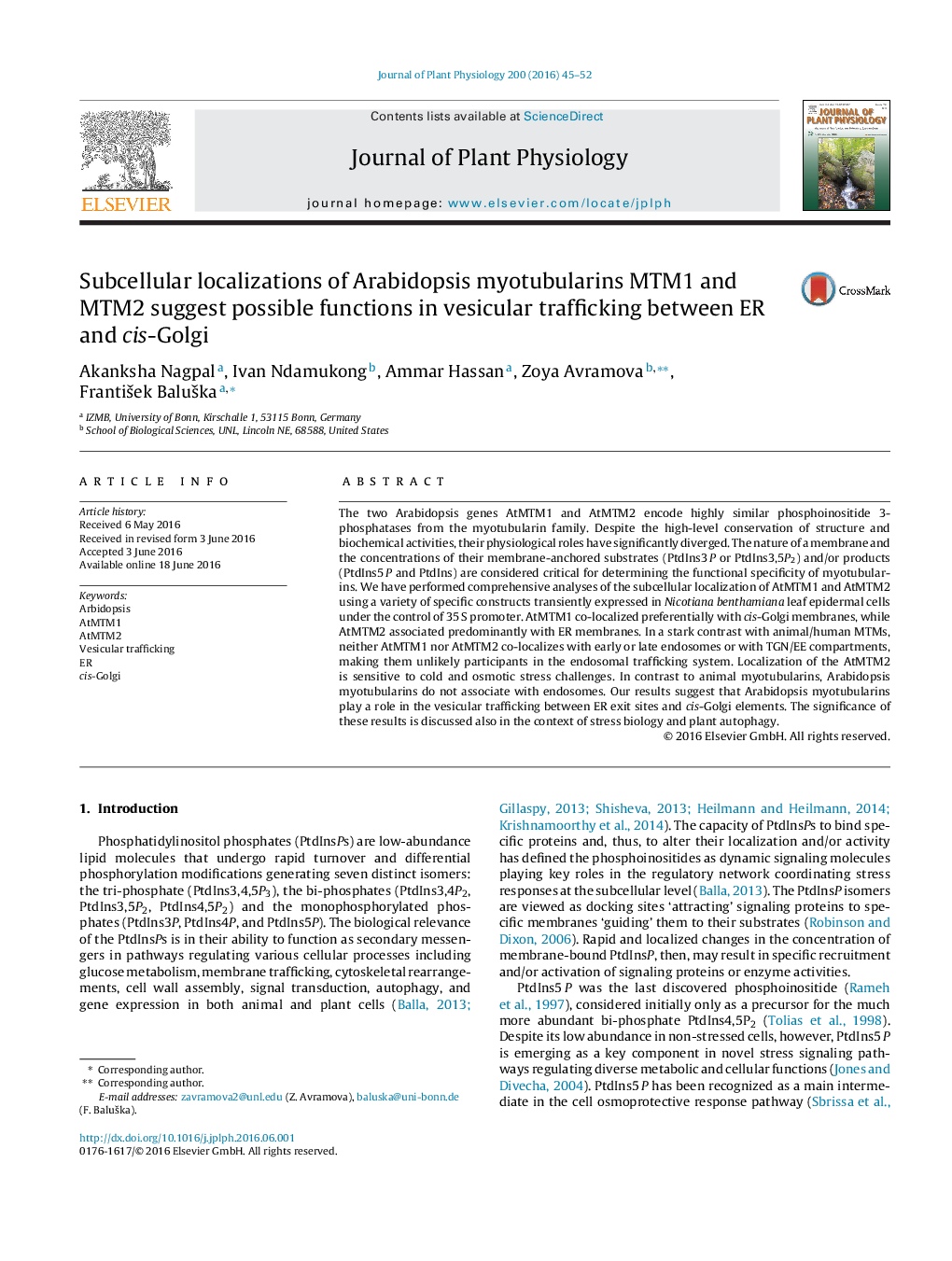| کد مقاله | کد نشریه | سال انتشار | مقاله انگلیسی | نسخه تمام متن |
|---|---|---|---|---|
| 2055372 | 1543878 | 2016 | 8 صفحه PDF | دانلود رایگان |

The two Arabidopsis genes AtMTM1 and AtMTM2 encode highly similar phosphoinositide 3-phosphatases from the myotubularin family. Despite the high-level conservation of structure and biochemical activities, their physiological roles have significantly diverged. The nature of a membrane and the concentrations of their membrane-anchored substrates (PtdIns3 P or PtdIns3,5P2) and/or products (PtdIns5 P and PtdIns) are considered critical for determining the functional specificity of myotubularins. We have performed comprehensive analyses of the subcellular localization of AtMTM1 and AtMTM2 using a variety of specific constructs transiently expressed in Nicotiana benthamiana leaf epidermal cells under the control of 35 S promoter. AtMTM1 co-localized preferentially with cis-Golgi membranes, while AtMTM2 associated predominantly with ER membranes. In a stark contrast with animal/human MTMs, neither AtMTM1 nor AtMTM2 co-localizes with early or late endosomes or with TGN/EE compartments, making them unlikely participants in the endosomal trafficking system. Localization of the AtMTM2 is sensitive to cold and osmotic stress challenges. In contrast to animal myotubularins, Arabidopsis myotubularins do not associate with endosomes. Our results suggest that Arabidopsis myotubularins play a role in the vesicular trafficking between ER exit sites and cis-Golgi elements. The significance of these results is discussed also in the context of stress biology and plant autophagy.
Journal: Journal of Plant Physiology - Volume 200, 1 August 2016, Pages 45–52